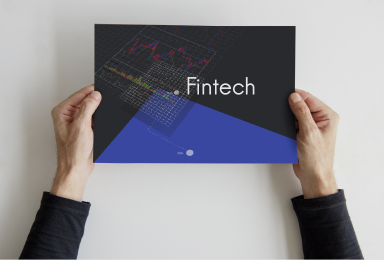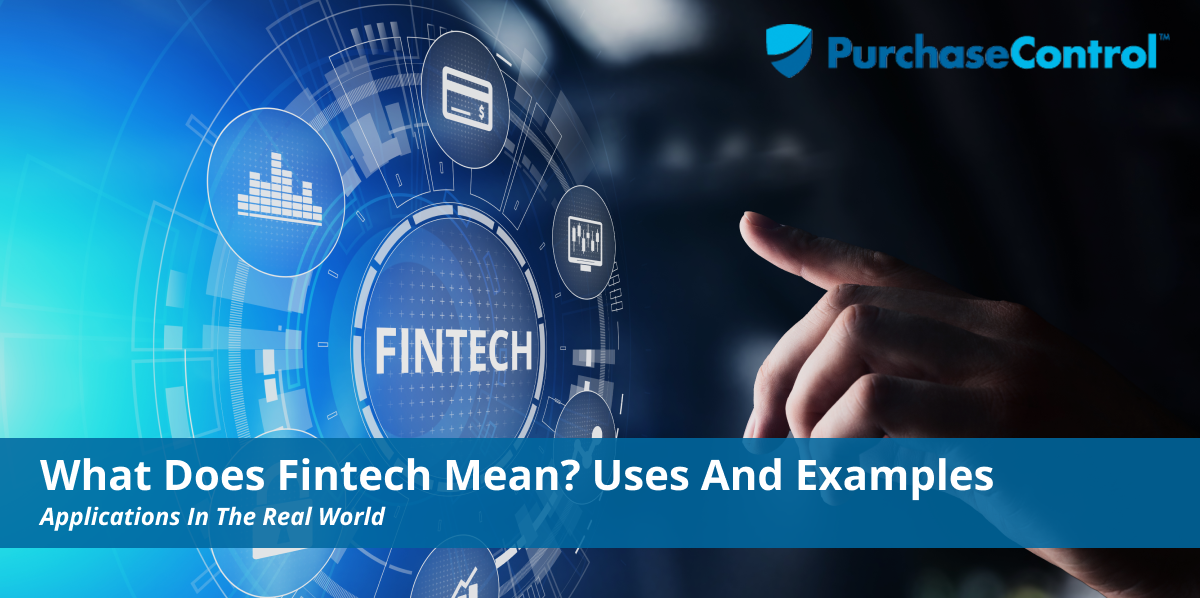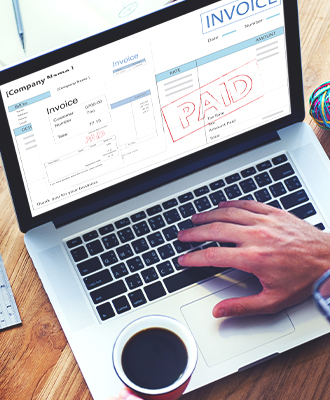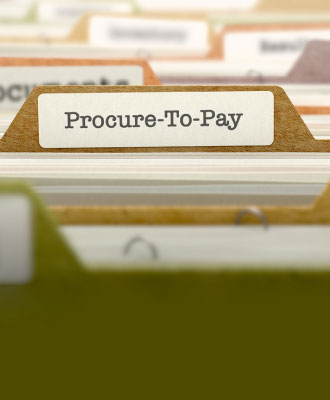What Does Fintech Mean?
FinTech, or financial technology, is a term used to describe any new technology that aims to improve and automate the use and delivery of financial services. It helps both businesses and consumers better manage their financial processes with the use of specialized software and algorithms used on smartphones and computers.
When the term was first used, it referred to the technology banks and other financial institutions used in their back end systems, but over time, its meaning has shifted to consumer-oriented services. As such, the definition has also shifted toward consumers.
Fintech now includes retail banking, education, investment management, fundraising and non-profit, and more. What most people are familiar with in fintech though, is the development and use of cryptocurrencies like Bitcoin, Litecoin, and Etherum, to name a few.
In broad terms, Fintech describes any company that uses the internet, cloud services, mobile devices, or software technology to either connect with financial services or to use them. That money you send to your friend on Venmo for the coffee? Fintech. That PayPal payment you sent for the new shoes you ordered? Fintech. That online-only bank? Fintech. Those fractional stocks you buy on the market with a smartphone app like Public or Stockpile? Yep. Fintech.
There are nearly 2 billion people across the globe that don’t have bank accounts. And for them, fintech makes it easy to participate in financial services without relying on the traditional brick and mortar institutions. With mobile banking, people can use a debit card and ATM, never needing to set foot in a branch. It’s even possible to get credit cards without relying on the traditional banking approach.
“Fintech was developed to make financial processes easier for everyone, with easy-to-use technology.”
Fintech Examples
Blockchain and Cryptocurrency
Thanks to cryptocurrency exchanges like Coinbase, users can buy and sell cryptocurrency. But, the blockchain does more than that. With services like BlockVerify, data stays on the blockchain and ultimately reduces fraud. It’s true, there’s still some controversy around the blockchain, but it’s grabbed the attention of the investment world.
Open Banking
This concept is highly disruptive to the banking industry. It relies on the blockchain and suggests that third parties have access to bank data to build applications that create a connected network of third-party providers and financial institutions.
Mobile Payments
Want to split the cost of lunch with your friend, without asking servers to split the ticket? Want to pay for something in-store, but realize you left your wallet at home? Apps like Venmo, PayPal, and CashApp make it possible to send money to your friends and family with your phone. Facebook and Google have joined in, making it possible for you to send money in email and private messages. In the store, you’ll need something like Samsung Pay or Apple Pay, where your card is stored in the platform.
The money transfer takes place immediately in many cases, unlike needing to wait several days for a check to clear.
Crowdfunding
Want to start a business? Can’t qualify for a traditional bank loan? No problem! Crowdfunding makes it possible to go straight to your potential customers to invest their support in your company or project. Over the years, crowdfunding has expanded beyond financing businesses and projects, to fundraise for worthy causes and help people cover unexpected medical expenses. Where Kickstarter and Indiegogo once cornered the market, many other platforms have popped onto the scene, and we expect other platforms to continue to pop up for a while.
Peer-to-peer lending platforms like LendingClub, allow people to finance loans to other users, and earn a return on their investment when the loan is repaid.
Stock-Trading
In today’s world, you don’t have to have a large amount of money to start in the stock market. Thanks to apps like Robinhood, Stash, Acorns, and Public, you can invest as little as $5 at a time. With some business models, the robots handle trading for you, but with others, you choose the companies you want to invest in, and how much you want to spend.
With Acorns or Betterment, for instance, you can choose the type of portfolio you want, but you don’t have the control to pick and choose the stocks you want to invest in, because it’s robo investing, using artificial intelligence, or robo-advisors, to handle your trades to build wealth in your account. Pubic, on the other hand, lets you choose your stocks, and provides information about what Wall Street thinks about each of them. Fees vary from one app to another but make it more affordable to trade.
Online Financing
For people who do not have or do not want credit cards, but want the freedom and flexibility to make purchases online and pay for them over time, companies like Affirm, Klarna, and Sezzle are there. Depending on the size and nature of the purchase, interest-free options may be available. But, for consumers with little to no credit, the high rates with Affirm still provide a way for customers to secure credit and build their credit history. For e-commerce businesses, offering the ability to pay for orders in installments helps attract customers.
But beyond ecommerce, mortgages are changing shape, too. Better Mortgage aims to streamline the mortgage process and bypass brokers. They give you a digital-only offering, providing a verified pre-approval letter within 24 hours of applying.
Tala focuses on consumers in the developing world with microloans. They do this with a deep data dig on their smartphone to learn more about their transaction history and the types of games they play. Consumers get better options than local banks and unregulated lenders.
Insurance
Fintech has caused disruption in the insurance industry, to the point where some have even started using the term “insurtech”. You can use Fintech to handle anything from car insurance to home insurance.
The old approach to insurance involves using actuary tables to assign each consumer to a risk level, lumping customers together to ensure the policies are profitable for the company. This means some people end up paying more than they should be based on the level of data they use to group people.
Insurtech makes use of GPS tracking of cars, the wearable activity trackers, and other ways to track your car’s data – such as your average speed, braking patterns, and more. Ultimately, this allows insurance companies to build more clearly delineated groups of risks, which allow for products to be more competitively priced.
In recent years, fintech startups, specifically targeting the insurance industry, have begun experimenting with using AI and machine learning to find the right mix of policies for individualized coverage. Though not reality yet, there’s interest in using apps to pull parts of policies into one to create on-demand insurance for micro-events like borrowing a friend’s car. There’s also the possibility of adopting a peer-to-peer business model to create customized group coverage and encourage people to make good choices with group rebates.
Budgeting
Keeping track of finances is important for everyone, but not a practice many people followed before new technology stepped in. In the past, you had to create your own budgets, which involved gathering checks and bank statements and navigating spreadsheets.
Fintech services like Mint and TruBill make it possible for consumers to track income, monthly payments, expenses, and more, all with their mobile devices. It helps consumers make smarter decisions, while still protecting their financial data.
Credit Reporting and Monitoring
Knowing and monitoring your credit score is important, whether you’re in the market for a new car or home or not. The financial services industry has changed as a result of services like Credit Karma and Credit Sesame. They allow consumers to keep a close eye on their credit score with monthly updates (and the option to pay for more frequent updates) so they can track their progress when it comes to paying off debt. They can also use optional add-on data protection services to keep their credit from being harmed as a result of fraud. Users get alerts when a new credit card or loan is reported on their profile. Credit card companies are now offering free credit scores every month, too, in an effort to remain competitive.
Fintech and B2B
Before fintech firms came to the scene, businesses would have to go to banks and obtain financing. Thanks to fintech products, however, businesses can access a slew of financial services through mobile technology.
Cloud-based platforms, like PurchaseControl, and customer relationship platforms like Salesforce provide services that make it possible for businesses to interact with their financial data to improve their services.
For instance, using PurchaseControl to address your procure-to-pay process, you can track spending in a number of ways. It’s possible to see which departments are spending the most money, which vendors you’re spending the most money with, and more. The cloud-based nature ensures the information is current and always up to date. Using automation technology, you can eliminate a number of paper-based and manual processes to save time, money, and reduce errors. This in and of itself helps save money.
The Future of Fintech
In 2016, Fintech startups received $17.4 billion in funding. Data shows 26 fintech unicorns, located all over the world, were valued at $83.8 billion. Updated for the end of 2018, that same research firm found 39 venture capital-backed financial technology companies worth $147.37 billion.
It’s clear consumers want it, and that businesses can benefit from it. Failure to adapt to the emerging technology will put you behind the competition.
PurchaseControl is a helpful fintech
Find Out How








